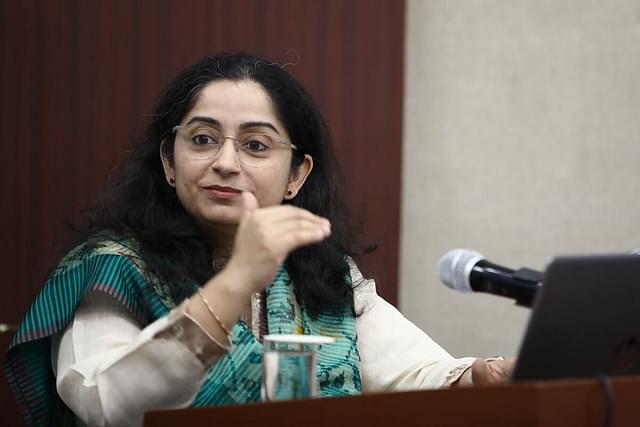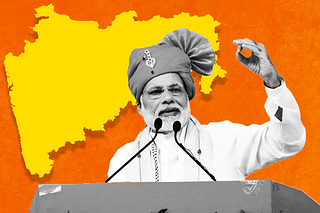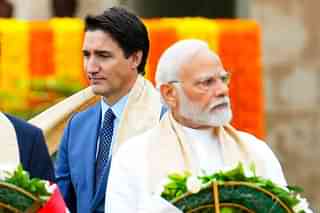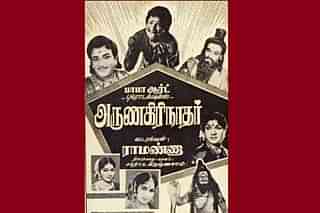Economy
How PM Modi's Approach To Policy Differs From That Of The UPA Government — Economist Shamika Ravi Explains
Swarajya Staff
Apr 13, 2024, 06:37 PM | Updated Apr 15, 2024, 12:33 PM IST
Save & read from anywhere!
Bookmark stories for easy access on any device or the Swarajya app.

Macroeconomics is for governments and microeconomics for corporates and market research professionals — this has been the popular notion among lay readers and academicians alike for many years now.
However, Dr Shamika Ravi, a member of the Prime Minister's Economic Advisory Council and a Secretary with the Government of India, has challenged this traditional dichotomy.
In her 13 April article in news portal Moneycontrol, Ravi points out that microeconomics is equally important in the context of understanding the growth and development policies for the country.
She says while macroeconomists often prioritise aggregate numbers, the focus should shift towards understanding individual choices and behaviours that decide the trajectory of overall economic growth.
Drawing comparisons, the economist illustrates how the macro outlook of the Congress-led United Progressive Alliance (UPA) contrasts sharply with the micro perspective of the Bharatiya Janata Party (BJP)-led National Democratic Alliance (NDA).
A case in point: Prime Minister Narendra Modi’s emphasis on not just implementation but also assessing grassroots-level impact.
Here are some key arguments made by Dr Ravi for microeconomics being equally essential for understanding economic growth:
1) UPA Vs NDA On Policy
UPA's macro approach prioritised aggregate numbers, such as gross domestic product (GDP) growth rates, while the NDA under PM Modi focused on micro revolutions to ensure basic infrastructure reached all individuals, irrespective of their socio-economic status or geography.
According to the senior economist, this difference is evident in the government’s approach to the implementation of Ujjwala Yojana.
"This shift in focus reflects a broader philosophical difference between viewing growth and development from a macroeconomic lens versus understanding individual empowerment and choices,” Dr Ravi said.
2) Digital Payments: Microeconomic Logistical Marvel
Dr Ravi in her article highlighted an instance where Dr P Chidambaram, the former finance minister of the UPA, mocked PM Modi's digital payment infrastructure plan.
During a parliamentary debate, the senior Congress leader had doubted whether the government’s focus on adopting the united payments interface (UPI) and other digital transaction mechanisms would benefit the poor in any way.
Dr Ravi points out that such notions were prevalent among the UPA leaders and their supporters owing to their macro approach, which blinded them to the transformative nature of UPI.
"In less than five years, not only have the benefits of India's digital public infrastructure reached every individual at the lowest order of economy, it is in fact considered a "logistical marvel" worldwide,” Dr Ravi wrote.
3) Macro Vs Micro On Household Expenditure
Dr Ravi observes that macroeconomics sees household expenditure on health and education as merely consumption expenditure. This, she writes, neglects the holistic and wider benefits resulting from household expenditure at the individual level.
The senior economist observes that there is a direct co-relation between household expenditure and labour productivity. She notes that there are limitations to the capacity of wages to provide an impetus to labour productivity. However, when a household spends money in areas like health and education, an improvement in health and upskilling of an employable individual helps make up for the fall in productivity.
"Considering this, from a micro perspective, household expenditure on health and education is an investment, not consumption. This is one of the major point of difference between macro and micro economic approach," Dr Ravi observed.
According to the senior economist, the incumbent NDA government, unlike the previous UPA governments, is acquesient of this difference. To elucidate, she cites the example of centrally sponsored schemes like the PM Jan Arogya Program and PM Awas Yojana.
"Such schemes can be analysed from both macro and micro angles. From a macro perspective, expenditure on these schemes can be simply viewed as targetted fiscal expenditure. However, when viewed from a micro perspective, one can see that the subsidies and other benefits provided to the citizens through these schemes, reduces the amount otherwise saved by households anticipating such expenses," Dr Ravi wrote.
"They also in-turn enable households to spend in other areas that help improve living standards inter alia labour productivity," she added.
4) Humanising Impact Of The Micro Approach
Dr Ravi emphasises the importance of considering both macro and micro perspectives in policymaking.
She points out that although macro indicators are important, they do little to help understand and formulate policies whose benefits can be reaped by every individual.
“In the macro-approach, a rupee spent by the government is merely a rupee spent. It pays very little attention to the details of the government program in terms of design and implementation and its impact on the lives of the individual.
"In sharp contrast, the micro approach, focusing on individual growth and development, has to go beyond the expenditure and pay close attention to the nature of the government programme and its implementation," she observed.
Policymaking, as per the senior economist, is not merely about budgetary outlay and achieving numbers that help score better on macro indicators. By adopting a micro approach to growth and development, policymakers can better address the diverse needs and challenges faced by individuals, ultimately leading to more inclusive and impactful policies.
Save & read from anywhere!
Bookmark stories for easy access on any device or the Swarajya app.
Introducing ElectionsHQ + 50 Ground Reports Project
The 2024 elections might seem easy to guess, but there are some important questions that shouldn't be missed.
Do freebies still sway voters? Do people prioritise infrastructure when voting? How will Punjab vote?
The answers to these questions provide great insights into where we, as a country, are headed in the years to come.
Swarajya is starting a project with an aim to do 50 solid ground stories and a smart commentary service on WhatsApp, a one-of-a-kind. We'd love your support during this election season.
Click below to contribute.





